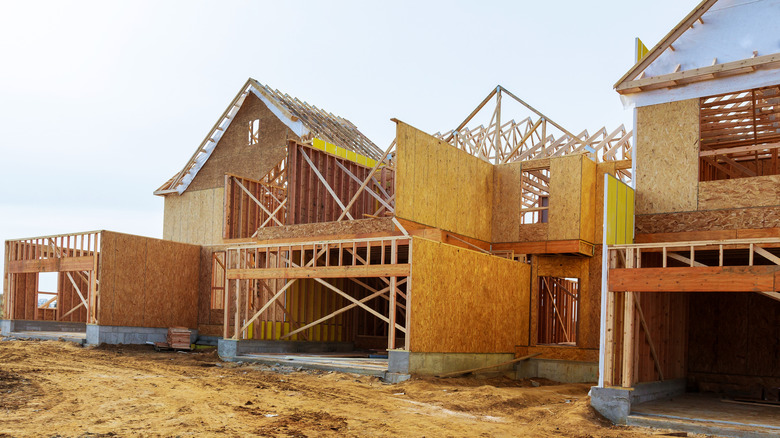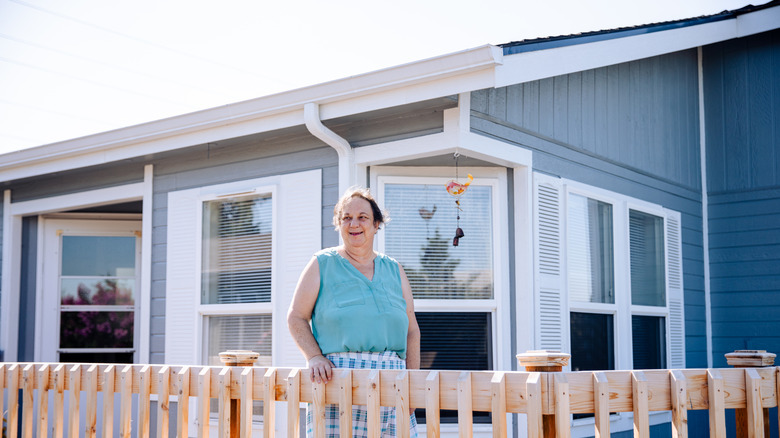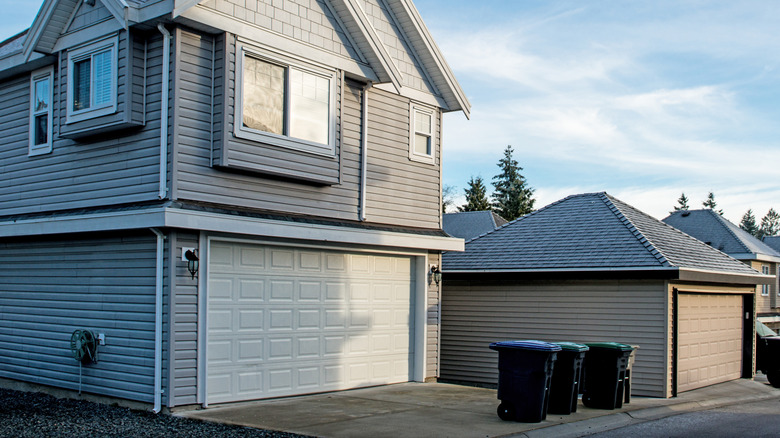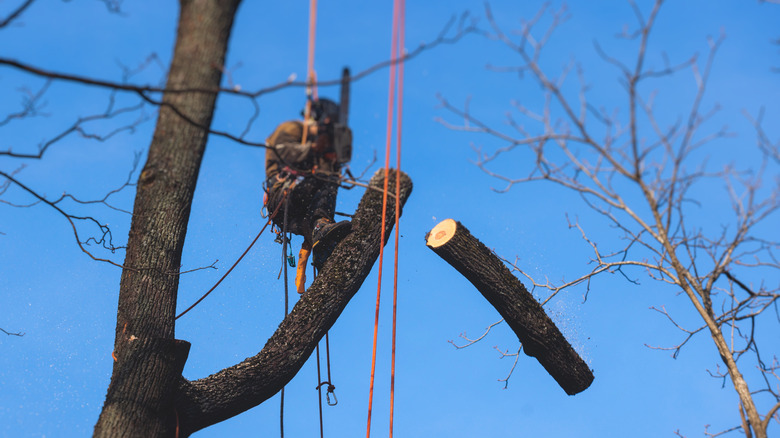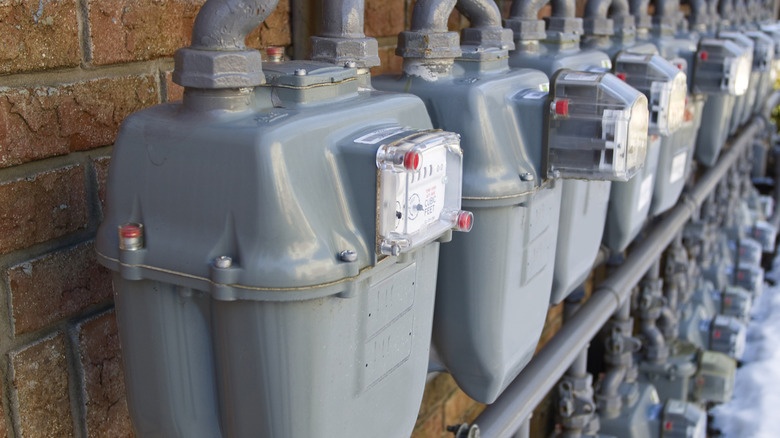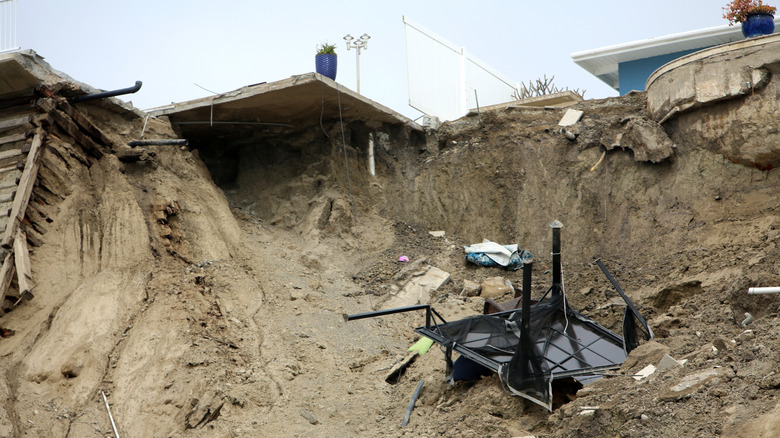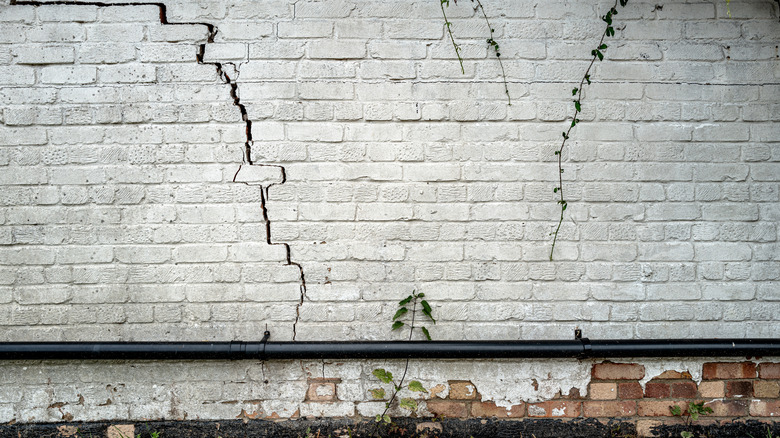How To Tell If Your Type Of Home Is At Risk For Earthquake Damage
Earthquakes threaten homes across the country, but especially on the West Coast along the San Andreas fault line. Major earthquakes can destroy houses, but even small earthquakes can crack foundations. You might not even notice your foundation has fractured until you notice water damage, mold growth, and misaligned windows. In some of the more advanced cases, walls can separate, causing an immediate safety risk. A home should have a flexible frame that can absorb horizontal shifts, but many do not, even in high-frequency states like California and Oregon.
It's important to have a good sense of whether your home is equipped to withstand a quake. Once you know the risks, you can prepare for these natural events by earthquake-proofing your home and finding the right insurance plan. Understanding the challenges facing your type of home can also help to indicate the best ways to retrofit your house against earthquakes. You should research the structural integrity of your home's foundation design, but it's usually best to seek professional assistance to determine if it needs a retrofit.
Stem wall and cripple wall constructions
"Stem wall" and "cripple wall" constructions are common in many classic designs with wooden frames and concrete foundations. They are vulnerable because their wood frame can slip off their concrete foundations. A contractor needs to bolt the walls of these types of houses to their foundations. The California Earthquake Authority offers $3,000 grants for retrofits for some homeowners, but generally, retrofitting jobs cost about $6,000.
Post-and-pier houses
Post-and-pier houses, which are supported by wooden posts, can sometimes rock and collapse during an earthquake. The lack of a concrete-perimeter foundation means that the home probably has less stability. The house might not be adequately connected to the foundation that supports it. When this is the case, a house can shift on its foundation or even separate completely. A licensed architect or engineer should be able to tell you if bolts and braces can protect the house.
Hillside houses
There are dangers of living in hillside houses, which are supported by columns or posts. Improperly reinforced hillside houses can slip and detach from their foundations. When this happens, the structure will often collapse in on itself. Aside from earthquakes, landslides can also endanger hillside houses. Retaining walls and strong drainage systems can protect these homes from landslides.
Manufactured homes
Many manufactured homes in California are specially braced due to laws passed after the 1994 Northridge earthquake. Still, recent seismic events have shown that some manufactured homes have been inadequately braced or not braced at all. This leads some manufactured homes to slip off their supports during earthquakes. Bolts connecting the home to its supports should prevent the home from sustaining damage.
Soft-story houses
Structural instability can be an issue with "soft-story" houses, which have a room above an attached garage. The first floor of many soft-story houses is often weaker because the garage door opening fails to provide structural support. Soft-story houses built before 2000 are especially at risk of collapse because regulations were not as strict at the time. The State of California provides retrofit grants for this type of house. For these retrofits, contractors will usually put an additional beam above the garage door and bolt the house to the foundation.
Houses built before 1980
The California Earthquake Authority (CEA) warns that houses built before 1980 are generally more vulnerable to earthquakes. Many of these homes are not bolted to their foundations, so they are more likely to slip in the case of a seismic event. The building codes were also loose back then, so the homes from that time are often a bit less stable and even at risk of collapse in some cases. CEA offers a discount policy on retrofitting for homes built before 1980.
Homes with hazards around them
There are several precautions you should take if you live in an area of high seismic activity. It's wise to cut back dead trees or limbs that could fall on your house. Certain porch covers need to be reinforced so they don't detach from the house as well. Any heavy appliances should be secured to the walls. There are a few essentials to keep packed in the house in case of an emergency evacuation, like bottled water and gauze.
Old gas lines
Roughly one in four fires after earthquakes happen because of natural gas leaks. You can mitigate the risk of a gas leak by installing flexible pipe connections and securing any gas appliances. You should anchor all your water heaters, stoves, furnaces, ovens, and dryers to their walls to help prevent a leak from occurring. Also, make sure you know where your gas meter and the shutoff valve are located on your property, and be ready with a wrench to shut off the gas if necessary.
Home built on loose sand
If you live in an area with sandy soil, soil liquefaction can be a major issue for your home's structural integrity, especially in seismically active parts of the country. Water will saturate granulated soil and cause it to loosen around the foundations of homes, and when an earthquake strikes, the sand can flow into a liquid, and homes will slip downhill as well. One famous example of this type of natural disaster was the 1989 Loma Prieta earthquake, which killed 63 Bay Area residents. Proper drainage systems can prevent these mudslides from happening.
Cracks in foundations, walls, or chimneys
If you live in a home that is geographically vulnerable to earthquakes, cracks in the construction reveal structural vulnerability. Don't waste time worrying about the cracks in your ceiling or walls — before the damage gets any worse, get it inspected and possibly retrofitted. Cracks in its walls, chimneys, or foundations do not necessarily mean that your home is about to collapse, but it's best to play it safe. After an earthquake, you may also notice that the windows and doorframes aren't aligned. Any of these signs needs to be addressed as soon as possible.

